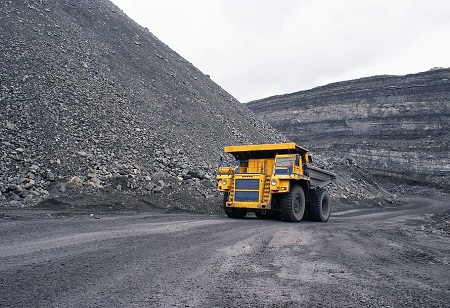On August 30th, the Index of
Eight Core Industries (ICI) that was released by the Ministry of commerce & industry stated that the country’s core industrial sector observed growth of 11.6 per cent in August 2021. As per the data, it is an improvement from 2020, as the industries had contracted by 6.9 per cent.
While the
key industries constitute the core sectors of an economy, India has 8 sectors that are considered the core sectors of the country and these include:
• Cement
• Coal
• Crude oil
• Electricity
• Fertilizers
• Natural gas
• Refinery Products &
• Steel
All of these consist of 40.27 per cent of the weight of items that are included in the total Index of Industrial Production. Furthermore, these industries not only have a major impact on the country’s economy but also significantly affect most other industries. Among all these, coal production for August increased by 20.6 percent compared to 2020, and natural gas production rose by 20.6 in August 2021.
The petroleum refinery production rose to 9.1 percent and electricity generation increased by 15.3 percent YOY, according to the government data. Furthermore, Steel & cement production also surged in 2021, when compared to a similar period in 2020. Conversely, the output of crude oil industries declined by 2.3 percent & fertilizer industries by 3.1 percent, over the yearly period.
Problems of core industries and the solutions
The eight core industries consist of 40.27 percent of the weight of items that are included in the index of Industrial Production (IIP). Let us look at some of the problems faced by at least 3 core industries and how they can be solved.
Cement Industry
Cement is not only a significant infrastructure core industry but also one of the most advanced industries in the country.
While Cement is manufactured mainly using limestone and clay, the other raw materials consist of shale, coal & gypsum. Therefore, cement plants are always located near limestone deposits and also the cement plants are located close to rail routes as cement should be dispatched to far-off consuming centers and as coal & gypsum are being brought generally from long distances.
“Even though construction activities were allowed amid state restrictions, the cement sector saw the largest sequential moderation in May 2021 (17.6 per cent) as well as the deepest pace of contraction relative to May 2019 (15.2 per cent). This may reflect the impact of the second Covid surge on rural demand, as well as the YoY decline in the government of India’s capital outlay in May 2021,” said Aditi Nayar, chief economist at ICRA.
The Indian cement industry ranks high in cement manufacturing in the world. Furthermore, it also produces quality cement to meet global standards. Furthermore, owing to the introduction of advanced technology the cement industry has been able to immensely conserve energy as well as fuel and to save materials to a great extent.
Intending to utilize the massive production capacity which is available with the cement industry, the government has found out the thrust areas for rising demand. This includes leveraging ready-mix concrete for huge infrastructure projects as well as the construction of concrete roads, and further push to housing development programs, while others include promotion of concrete highways & roads.
Coal Industry
The reality of the country’s energy industry is that around three-quarters of India’s power is from coal-powered plants. Furthermore, it will not change to a greater extent over the coming decades. Therefore, it is critical that the country increases its domestic coal manufacturing in order to give energy security and decrease its dependence on imports.
Certain restraints were identified by the working group on cement industry for the formulation of 10th Five-Year plan. Furthermore, other studies related to the global competitiveness of the cement sector in India such as high cost of power, freight cost, inadequate infrastructure along with poor quality of coal and additional capacity creation is restrained by the lack of long-term coal linkages. Therefore, at the institutional level, an Independent organization/enterprise must be formed in order to develop as well as maintain the repository of all coal related geological information in India.
Crude Oil & Natural Gas Industry
While India consists of 0.5 percent of the oil & gas resources, it has fifteen percent of the world’s population. This makes it highly dependent on crude oil and natural gas imports. India is the 3rd largest oil-consuming nation. The country’s consumption of oil actually rose from 8.3 percent YOY to 212.7 million tonnes in the year 2016. Furthermore, the country is the 4th largest Liquified Natural Gas importer, constituting 5.8 % of the total global trade.
The Central Government intends to raise the share of gas in India’s energy mix to fifteen percent from about 6.5 percent now to reduce pollution as well as carbon emissions, also Draft National Energy Policy aims to decrease imports of oil by ten percent by 2022.
